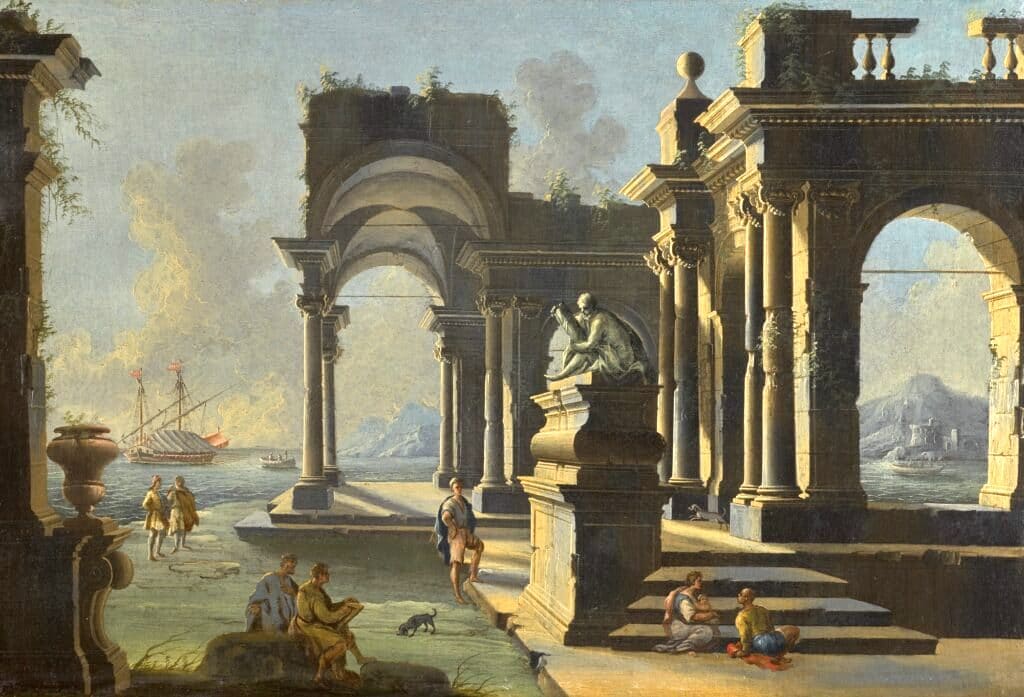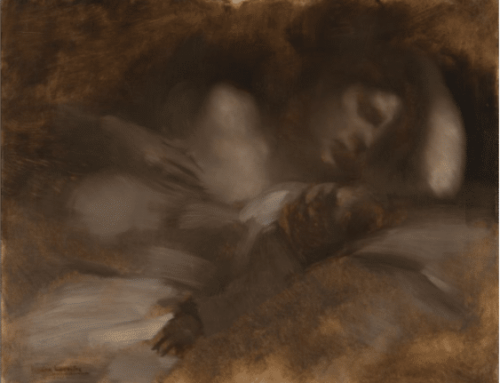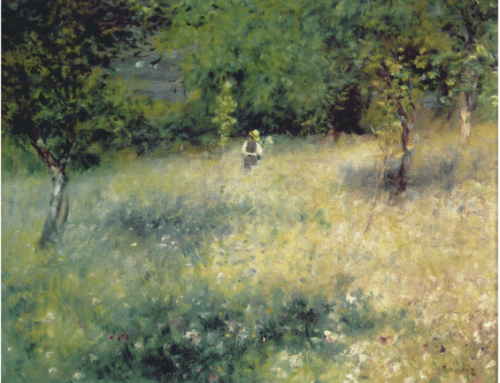“Our sweetest songs are those that tell of saddest thought.” – Shelley
Thomas Cole ends his Course of Empire cycle with a hazy moon rising peacefully over the marble ruins of a classical city. The motif of ruins in painting has a long history. It begins in the 1600s Lorraine and Poussin, the Dutch, the English, and American including Cole, right up to the present day.
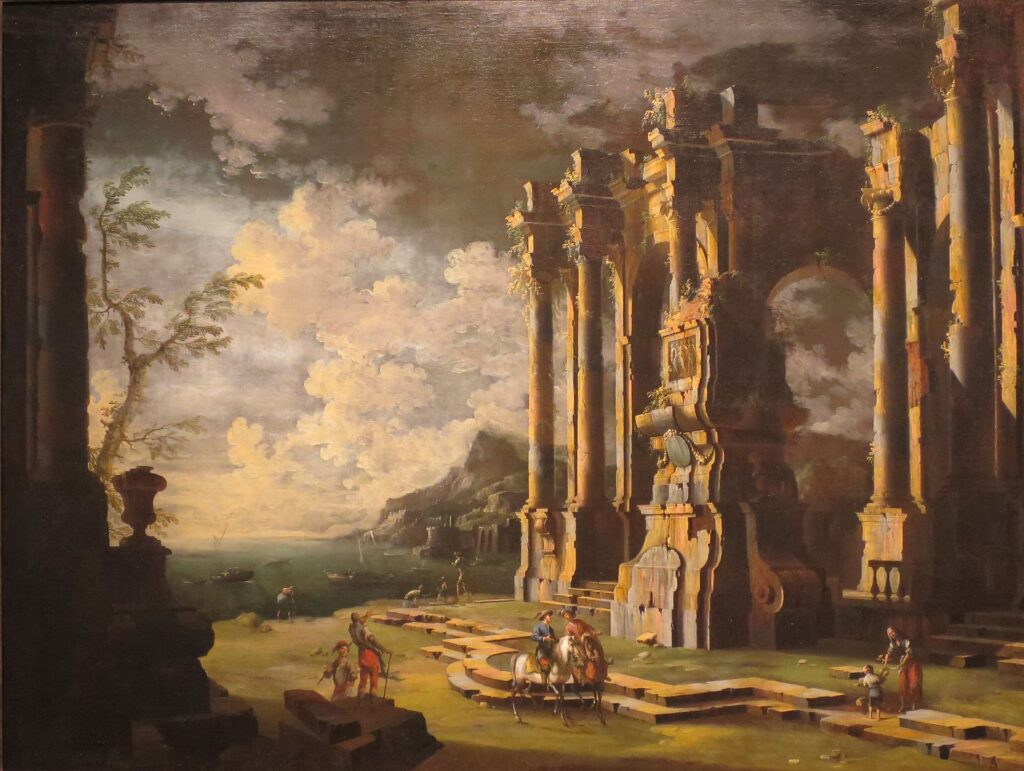
Leonardo Coccorante
Leonardo Coccorante was an 18th century Italian painter who made a career painting “capriccios” (tr. fantasies) of imaginary ruins, often situated on the shores of imaginary seas.
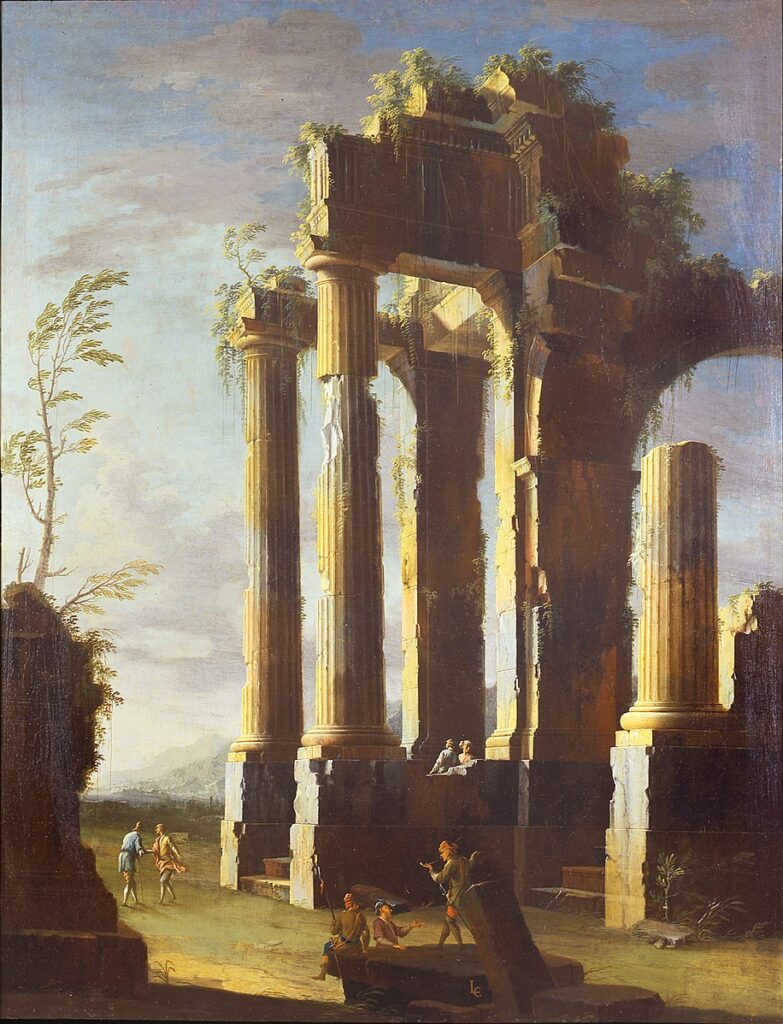
Leonardo Coccorante
Corrorante wasn’t the only one, nor was he by any means the first, the last, or the best. Many, many artists have created paintings of various kinds of ruins.
Why ruins? There is a long and celebrated tradition in art, poetry and music dedicated to not just to ruins, but to the passing of time. The sense of time and mortality, when intertwined with beauty, can transform a ruined, overgrown shrine into “a temple more divinely desolate,” in the words of Romantic poet Byron.
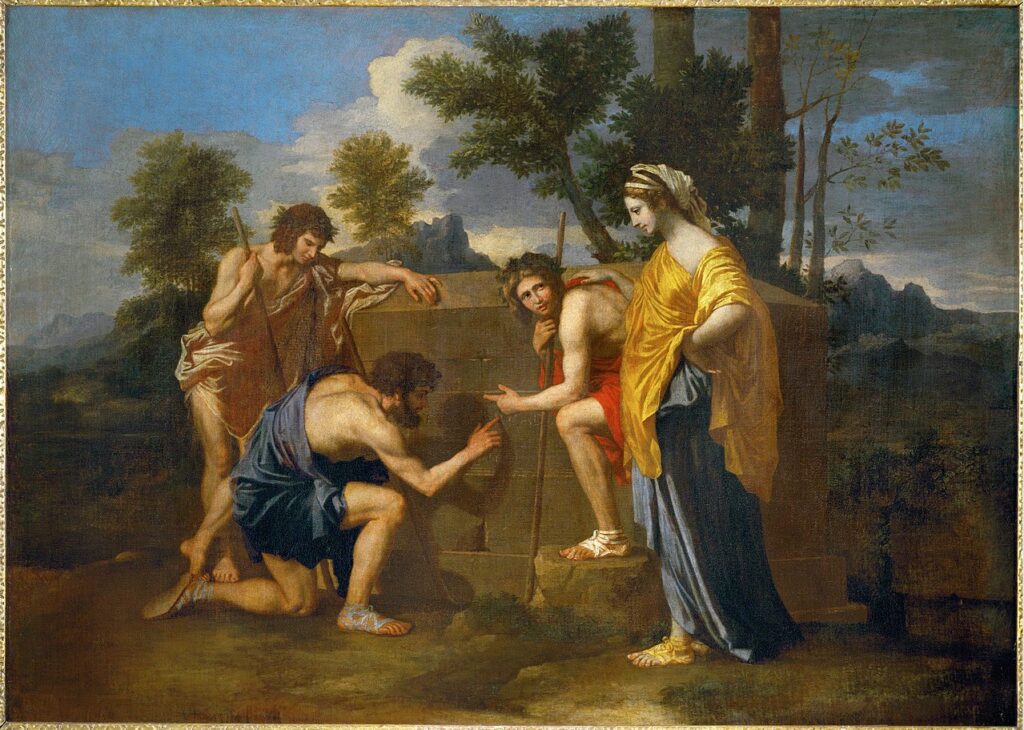
Nicolas Poussin, Et in Arcadia Ego, c. 1637
In this famous painting by post-Renaissance French master Nicolas Poussin, classical-era shepherds and a maiden gather about the ruins of an ancient tomb. As inscription in the stone, at which the figures are pointing, reads “Et in Arcadia Ego,” a Latin phrase that here suggests the long passage of historical time amid the fleeting nature of life and the inevitability of mortality.
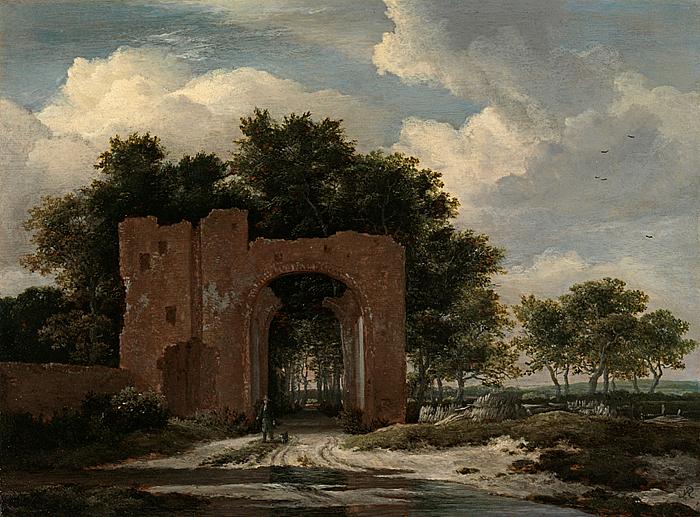
Jacob van Ruisdael, A ruined Castle gateway, possibly the Archway of Huis Ter Kleef, c. 1653
In landscape painting, viewers often read departing storms and clearing skies as the return of hope and good things on the horizon. One art historian notes that in some paintings of ruins by Ruisdael such as the one above, the sky “seems to suggest the transience not only of life but also of death and despair. After death comes rebirth and renewal.”
One of the absolute masters of evocative ruins has to be nineteenth-century German Romantic painter Casper David Friedrich.

Casper David Friedrich, 1744-1840
He specialized in the ruins of Abbeys – monasteries in desolate places that might suggest that not even the mighty “House of the Lord” could withstand the ravages ofd time and earthly weather.
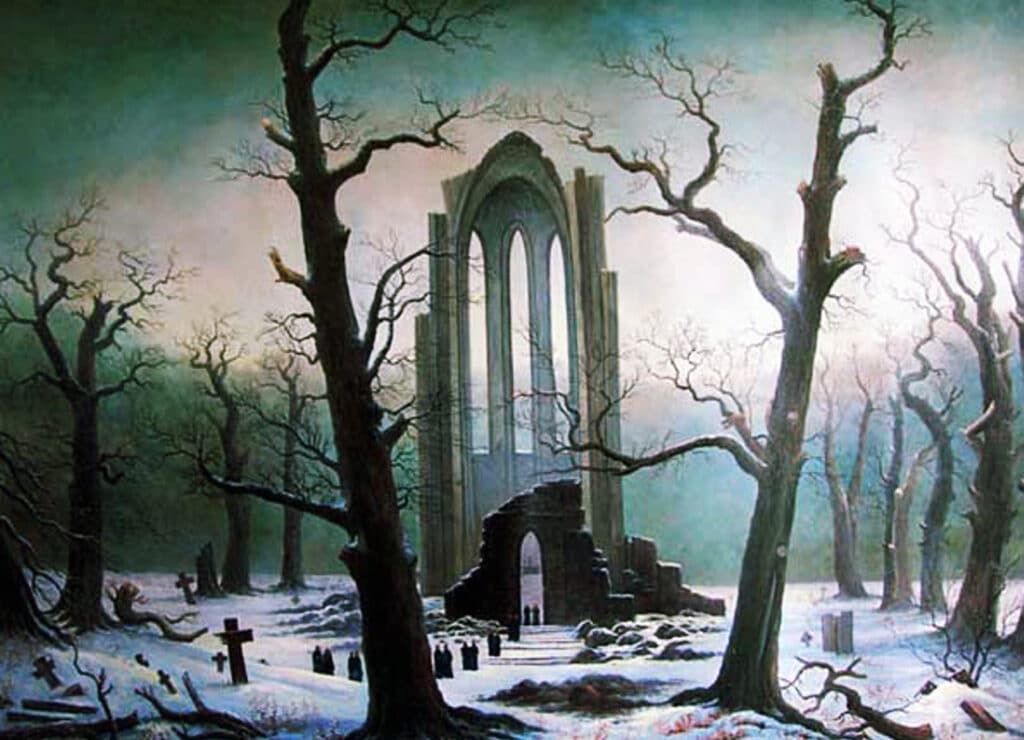
Casper David Friedrich, 1744-1840
Illuminated as they are by the light, a sense of the spiritual – and certainly the beautiful – nonetheless emanates from these melancholy paintings.
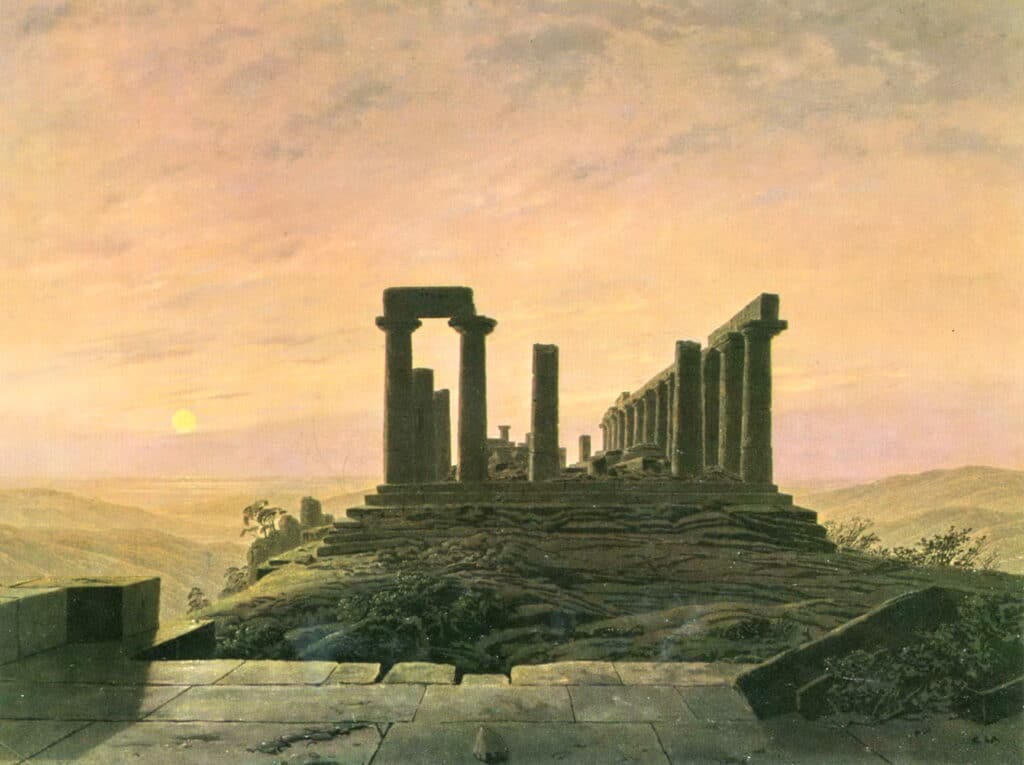
Casper David Friedrich, 1744-1840
Contemporary painter John Lilieda delves deep into the techniques of the old masters and the Old World landscape tradition. He details the essential techniques for painting stones and other important surfaces and light effects in this kind of work (including a painting of ruins titled “The Temple”) in an instructional video available here.
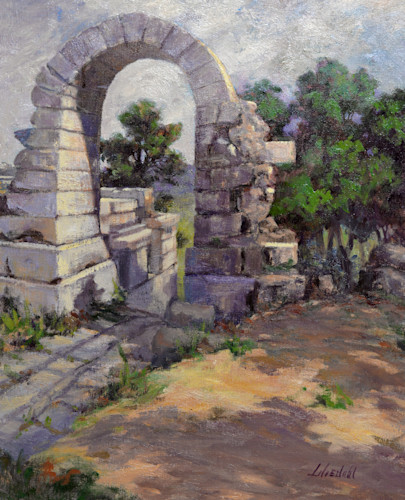
John Liliedahl, Appian Way, Italy
Many contemporary paintings continue to paint ruins – only they look quite different than those of the Old World. Tennessee native Lori Putnam, for one, evokes a sense of the passage of time with her rusty truck and ramshackle gas station in this painting of the old and now decommissioned cross-country highway Route 66.
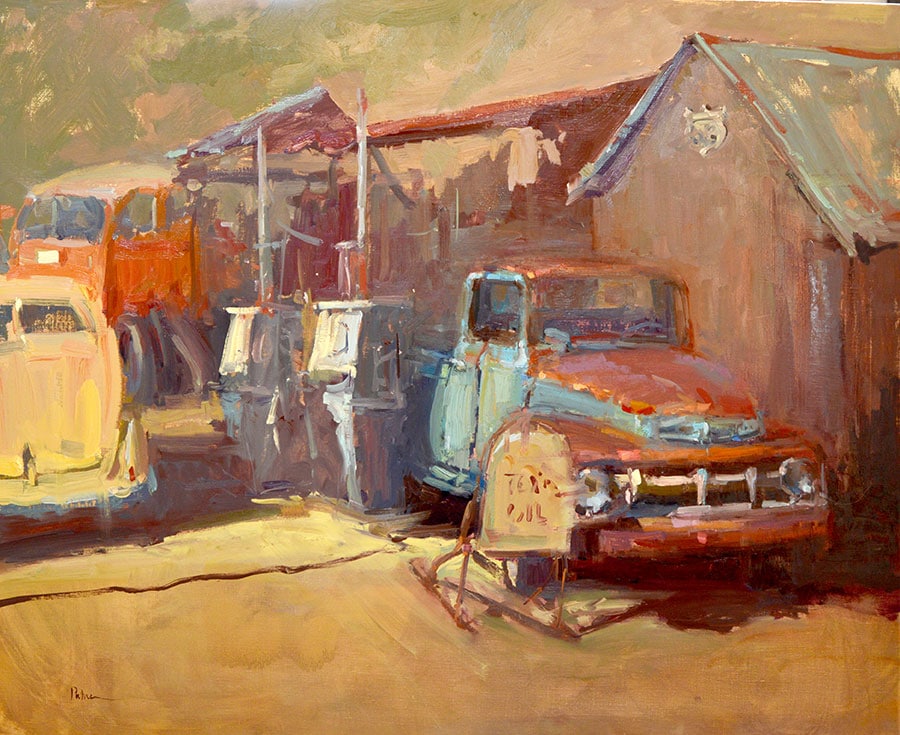
Lori Putnam finds the ancient pathos in modern “ruins” in her oil painting “Route 66” – in bold brush technique and lively color.

